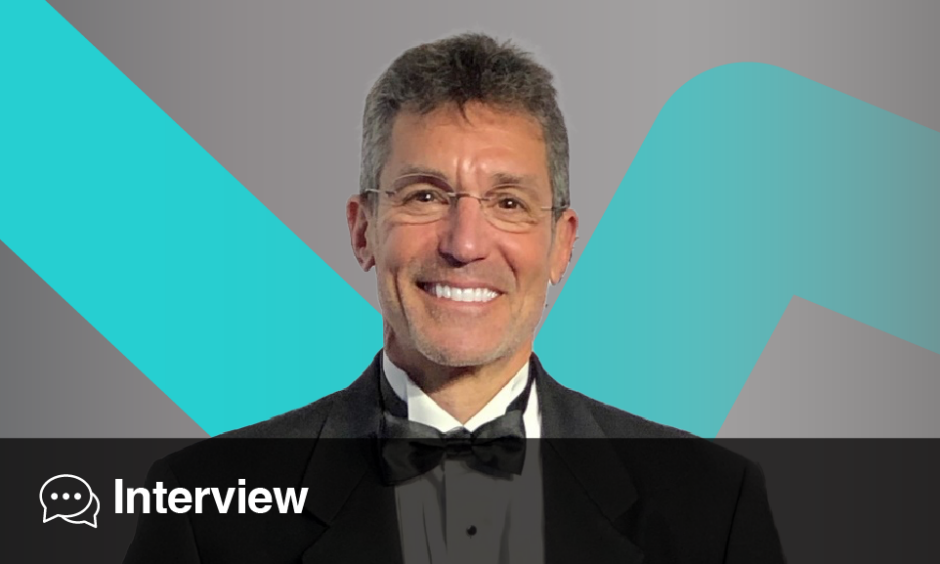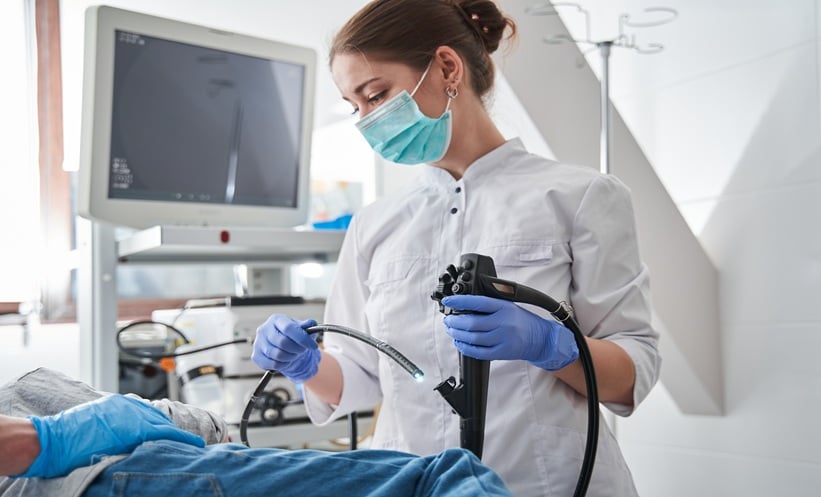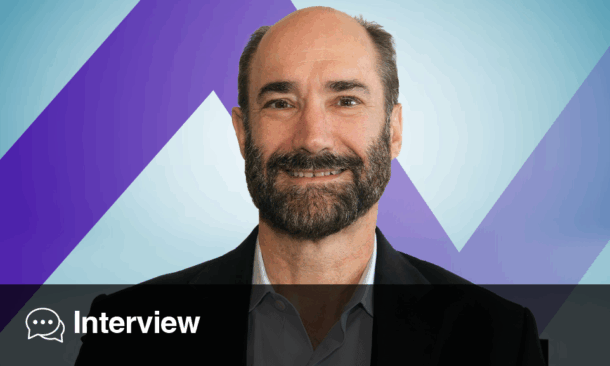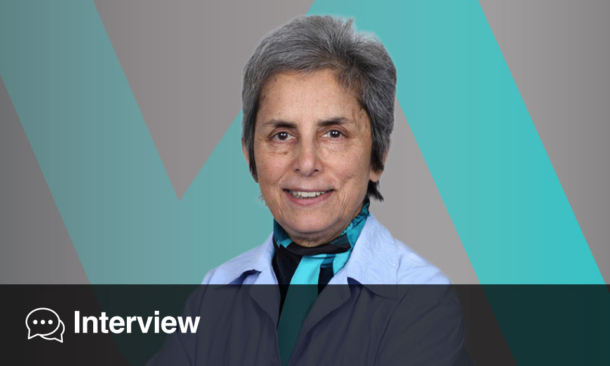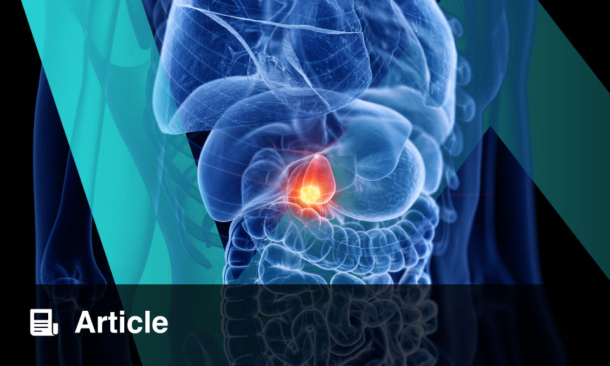David Katz | Chief Medical Officer, Tangelo, Intend; Founder/CEO, DietID, Detroit, Michigan, USA
Citation: EMJ. 2025;10[2]:44-50. https://doi.org/10.33590/emj/NAGX3438
![]()
What initially sparked your interest in nutrition and preventive health?
My interest in food as fuel for a high-performance body began before my commitment to medicine. When I was just 13 years old, for reasons I do not entirely recall, I tried out for the junior high school wrestling team. On Day 1, I was told how many sit-ups and push-ups I ought to be able to do, and I could do nothing remotely close to that many, having never thought about it before. As it turned out, I did not stick with the wrestling team, for various reasons that I will spare you, but the admonition of the coach on what is an acceptable level of fitness stuck with me, and I have worked out, with rare exception, every day of my life since then.
I started getting into other aspects of fitness and thinking about my body as a hard-working machine. The quality of the fuel you put in the tank of any machine is relevant to its performance, and my body was no different. I started becoming much more interested in my own nutrition. I had grown up with a typical American family’s typical American diet, but that started to change. Around the same time, my family had taken a couple of trips where we did horseback riding, and I enjoyed the privilege, the magnificent strength and capabilities of the horse, and the communication with it. Then we did some roundups with cattle and, looking at them, I realised they are not all that different. I cannot form a bond of affection, friendship, and appreciation for this animal and eat that animal. I renounced red meat. At that point, I had established a real interest in many aspects of dietary intake, for personal health, our connection to creatures, and the ethics of our dietary choices.
Ultimately, I wound up choosing medicine, going to medical school, doing internal medicine, and then doing a second residency in preventive medicine and public health. I carried my interest in nutrition into all of that. Throughout this, I was thinking: ‘This is incredibly important. Food is fuel’. By the time I finished my training in medicine, I understood how truly wondrous the human body is as a machine and the intricate, elegant choreography that sustains us every day. I understood that the importance of fuel for all these different processes is much greater than I ever realised before. You learn how much of your body is being replenished every day. You are turning over hundreds of millions of cells, you are burning through hormones and enzymes. You are depleting your reserves, and you must reconstitute them. The only source of construction material, whether for the growing body of a child or the refurbished body of an adult, is your diet. You only have two places to go: you can cannibalise your own body, taking proteins from here and putting them over there, or you must get what you need from food. The quality of construction material determines the quality of the structure. You would not want to build your house out of rotten wood. Food, uniquely, is both the body’s daily construction material and its fuel; that indicates a staggering influence on overall health, which is exactly what the science indicates.
How did this interest in diet shape the trajectory of your career?
All of that came together, and I finished my training in preventive medicine, my second residency, in 1993. Within a matter of weeks after my graduation and getting my master’s in public health, which I got years after my medical degree, a paper was published titled ‘Actual causes of death in the United States’.1 The two authors, Bill Foege and Mike McGinnis, pointed out that what gets listed on death certificates as the cause of death does not tell us anything about the actual causes of death. If someone dies of cardiogenic shock, secondary to congestive heart failure, secondary to multiple myocardial infarctions, secondary to atherosclerosis, nothing on that causal list tells us what to do. What you really want to know is, what caused the atherosclerosis? What set all of this in motion? McGinnis and Foege looked for that.
The paper was brilliant, and in my opinion, one of the most important in the modern era of biomedical publishing. They enumerated a list of 10 factors that collectively explain nearly all the premature deaths that occur in the USA and, by extension, in the modern world every year. What captured my imagination as a newly minted preventive medicine specialist is that 80% of premature deaths were linked to the poor usage of feet, forks, and fingers. The first one was tobacco use, the second was poor diet quality, and the third was a lack of physical activity. Together, you get 80% of the variance in all-cause mortality and 80% of the variance in chronic disease risk. That is a career right there.
I focus on diet not only because I have a natural interest in it but also because everybody eats. People are more lost and confused about their diets than the other two variables, where it may not be easy to do what you need to do, but there is no lack of clarity about it. For instance, movement is better than sitting all day and not smoking is better than smoking. I need to help people understand that we know what to do regarding diet.
Every health professional should be addressing diet and nutrition. It is the number one single leading predictor variable for all-cause mortality and total risk of chronic disease. If you are ignoring that factor, then I think you are abdicating the primary commitment we made as health professionals, which is to do all we can to advance the human condition, add years to lives and add life to years.
Could you please tell us a bit about the ways in which you think the public can use food as medicine?
Simple swaps can add up to make a huge difference. One of the reasons is something that I call ‘Taste Bud Rehab’. Taste buds are adaptable. When they cannot be with the foods they are used to loving, they learn to love the foods they are with. If you trade up and think about choosing more nutritious items in every aisle of the supermarket, you are cutting some number of grams of sugar out of your daily diet, you are cutting some number of milligrams of sodium, you are cutting food chemicals, flavourings, texturisers, etc. out of your daily diet. Regarding sugar and salt, we know that the more you get, the more you need. That is called tolerance. It comes from the field of addiction, and there is no question that food has addictive qualities. It is more fundamental than most people realise.
People often ask me if food can really be addictive. Why do you think anything is addictive? Why is it possible for the human nervous system to get addicted? Where does that come from? Did somebody decide we should have an addiction pathway? What purpose could that possibly serve? It is about survival. Evolutionary biology cares about survival. The reward mechanisms in the human nervous system, and the nervous system of many other species, favour things that support survival, and among those is getting a variety of crucial foods and crucial nutrients.
In a natural world where sugar is hard to get, where you find it in breast milk when you are a newborn, and you find it in honey that you have to wrestle from bees, and you find it in wild fruit, getting sugar is a good thing. There was no concern about excess sugar in the past. Getting sugar, and getting salt, was a good thing. Terrestrial animals will routinely go to a salt lick because it is hard to get enough salt on land. There is an incentive to get salt. The more you get, the more you want. Those are survival mechanisms. It is those reward pathways for survival that were co-opted by drugs and turned into addiction. They are not addiction pathways. They are survival pathways. They exist for food and sex, the two things that are conducive to the survival of the individual and the survival of our genes across generations.
It is not a question of: ‘Can food be addictive?’ Food is the reason anything’s addictive. Food is the reason we have these pathways in the nervous system to begin with. Therefore, the more sugar we get, the more sugar we need to feel satisfied, and the more salt we get, the more salt we need to be satisfied. Taste bud rehab says that you can reverse that. If you dial down the sugar, you need less and less to feel satisfied. It is the same with sodium. The goal of this transformation is not just about telling you how you must eat, and you do not have to fix everything all at once. You can get there with one better-informed choice at a time. The goal is to completely transform your palate so you prefer more wholesome foods. There are many studies that support this. I have 30 years of experience in patient care where I saw this happen innumerable times, but there are published studies that show the same thing: when you transform dietary choices and diet quality incrementally, ultimately leading to a complete overhaul of diet quality, people come to prefer foods they used to dislike, and they become averse to foods they used to prefer. They learn to love foods that love them back, and that is a beautiful place to spend the rest of your life.
That is how I eat, and that is how my family eats. I do not eat food that I dislike. I love the food that is good for me. I do not like the food that is not good for me. I cannot stand it; it is too sweet for me, too salty. I have seen patients who started out one way and ended up the other. Taste bud rehab is a powerful concept, and I think that needs to be folded into the coaching we do. Rather than throwing people into a diet that is radically different from what they are used to, teach them to love food that will love them back. Give them a little bit of time to habituate, and they will have a better life as a result.
‘How to Eat’, the book you co-authored with Mark Bittman, aims to cut through the confusion surrounding food, health, and diet. What do you believe is the biggest misconception people have about nutrition today?
‘How to Eat’ is my most recent book, which I did with Mark Bittman. Mark, among other things, has been a columnist for The New York Times for many years and is extremely knowledgeable about food systems and food policy. Mark lives on a farm, so we went there, closed the door, and asked one another questions until we ran out of steam. We recorded it all, transcribed it, and then distilled it down to this book. The whole thing is a conversation. The way the book reads is like inviting the readers to just pull up a chair to the coffee table where Mark and I are just chatting. I joke in that book that it ought to be seven words long, and none of them should have been ours. They should be Michael Pollan’s “Eat food. Not too much. Mostly plants.” The biggest misconception about diet is that there are misconceptions about diet. It is that simple.
Mark and I talked a lot about this: why are we lost and confused when it is really that simple? We will answer all your questions. What about dairy, and what about yoghurt? What about the microbiome? Can I eat to feed my brain, and can I eat to feed my heart? What about my immune system? Are omega-3s really that good? We broke it down and went into all the particulars, but we agreed on this: eat food, but not too much, mostly plants. Therefore, the main misconception about diet is that there is any real complexity.
For people thinking that it cannot be that simple, think about any other creature. Think about lions or wildebeest. Wildebeest need to eat grass because of the type of animal they are; we would not even think to ask if grass is good for them. Meanwhile, lions must eat wildebeest (or something like them). They cannot eat grass: they are constitutional carnivores. The questions are: what kind of animal are you, and what are you adapted to eat? A big part of this begins with humility and the recognition that humans are a kind of animal.
With so many conflicting opinions on dietary patterns, how do you define the ‘best’ diet, and what key principles should health care professionals keep in mind when guiding patients?
Optimising diet cannot fix everything. Eating optimally, not smoking, and being physically active give you no guarantee. The way I have always explained it is this: we can be good captains, we can have a good crew, and we can sail the vessel well, but we will only ever be masters of the ship and sails. We will never control the wind and the waves, so anything can happen. No matter how seaworthy your vessel, your body, is, no matter how well cared for or how well crewed it is, there are gales at sea that will cause the best vessels to founder. We get no guarantees, and we ought to be prepared to deal with that. However, it makes no sense to devote all of our resources to the residual 20% of human adversity that we cannot reliably prevent while ignoring the 80% we can. There is a balance to be struck there. Every health professional should be addressing diet and nutrition because it is a critical predictor of everything that matters.
I have a textbook, ‘Nutrition in Clinical Practice’, that is written for healthcare professionals. It is like a peer-reviewed publication, except it is not a single article, and the fourth edition of that textbook has about 20,000 citations. You cannot be biased in your job. If you are going to write a textbook, you must review all the evidence, including the evidence you like and the evidence you do not, and you must fairly adjudicate all of it and reach a summary judgment. It is perfectly clear that the basic theme of optimal eating for the kind of animal that we are is real food, mostly plants. It is also equally clear that all this nonsense about one superior diet is just confabulated. For instance, we do not have long-term randomised trials comparing an optimal Mediterranean diet, vegan diet, pescetarian diet, and Okinawan diet. We would have no basis to say which of those is the best if we were to match for diet quality, which can be measured objectively.
There is no single, narrowly defined, prescriptive diet for everybody. However, there is one basic theme of healthy eating that makes sense for everybody: eat mostly fruits, vegetables, whole grains, beans, lentils, nuts, and seeds or some combination thereof, and drink mostly plain water when thirsty. If you get that right, you simply cannot go too far wrong. If you get it wrong, it does not matter what else you do; you are not going to get your diet right. It is that simple.
You are the Founder of the True Health Initiative (THI), a global coalition of experts from over 50 countries, united to combat misinformation and disinformation that impact public, personal, and planetary health. How do you ensure a unified, evidence-based consensus on nutrition and lifestyle medicine despite differing cultural and dietary norms?
I have two answers, and they are both actions that I have taken. The first is that we should look beyond any one person’s opinion, to a global consensus of diverse experts with passions ranging from paleo to veganism about the aggregation of scientific evidence and its sensible interpretation. Years ago, when I founded the THI, the innovation there was to start inviting my friends and colleagues, who had very diverse opinions about diet, and explore whether or not we could agree about the fundamentals of a healthy diet. If you have spent your whole life studying one diet, when asked which diet you think is best, you will choose that one. A colleague who has studied a different diet will make a different choice. However, if I ask both what the fundamental principles of a generally healthful diet are, they are likely to agree: real food, mostly plants. I created a pledge that said this is true based on the weight of scientific evidence, and I believe the public deserves to know it is true. While I may have my more narrowly defined specific opinion, I support these general principles. I started asking people to take the pledge and sign up, and it was not long before I had hundreds of colleagues from 50 countries, from paleo to vegan and everything in between, saying ‘we agree’. One thing to do is to look at that kind of evidence, rather than any one person’s opinion.
The second thing to do is move past opinion and ideology altogether and do what we do in medicine, which is to adopt an evidence-based approach. We have to be interested in a measure of diet quality that is objective, validated, and correlates with the things that matter most: years in life and life in years. The approach that is most widely used around the world is called the Healthy Eating Index (HEI). The most current version is the HEI 2020, which is an aggregate view of food and nutrient components of the diet that creates a quantitative measure on a 100-point scale. The higher that number, the lower your risk and probability of dying prematurely from all causes, and the lower your risk and probability of developing any major chronic disease. This has been shown over and over again in massive studies involving hundreds of thousands of people spanning decades. It is epidemiology over ideology. We are scientists. We have signed up to the principle of evidence-based medicine, and that should pertain to nutrition as well. I can’t understand why we tolerate fad diets when diet quality, measured objectively, is the single leading predictor of premature death. We should be looking to the evidence-based, sensible interpretation of science, and global expert consensus. The basic theme of optimal feeding for Homo sapiens is not up for debate.
Can you please tell us a bit more about Diet ID and, given that diet quality is a key predictor of overall health and longevity, how does it help individuals and healthcare providers accurately measure and improve dietary habits at scale?
How do we enable and empower clinicians who are too busy, have too little time, and too many other things to deal with to address nutrition? The answer is two-fold. The first method involves innovations, particularly digital delivery, and then community support, and I am involved in both of these efforts as well. I was in academic medicine for 30-odd years, spent most of my career affiliated with Yale University, both conducting clinical research and seeing patients there. Six years ago, I left academic medicine to become an accidental entrepreneur because I invented something that was too important to neglect, and the only way I could get it to daylight was to start a company. That company is called Diet ID. We invented, developed, widely deployed, patented, published, and validated the first fundamentally new way for conducting comprehensive dietary intake assessments in about 50 years. We can do comprehensive dietary assessments in 60 seconds over any digital interface. Among the data generated instantaneously is an objective measure of overall diet quality using the HEI 2020. We can put that information in front of every clinician, which is a game changer.
It is like the invention of the blood pressure cuff. Diet ID is to diet is what the blood pressure cuff is to blood pressure.Before the blood pressure cuff was invented, you might have asked how we got clinicians to engage with the importance of blood pressure. We all know it is important, but we measured it in no one before we had a scalable means of doing so. Thus, no clinician had that cue to action. Then the blood pressure cuff was invented and socialised, and it democratised access to that crucial information. The next thing we knew, medical education raced to catch up with that information. I am on a mission to make diet quality a vital sign. It deserves to be, and now it can be. We have the means.
The second part of my answer is that every clinician should be looking at an objective measure of every patient’s diet quality. Every patient should also be looking at that information. Everybody who knows their blood pressure should know their diet quality and whether or not it looks healthy. Ideally, we would try to create synergy between clinicians, communities, and culture because when we think about healthy living, it is not a clinical enterprise but a cultural enterprise.
If, for a minute, we look at the world’s Blue Zones, those five populations around the world where people routinely live to be 100 and do not get chronic diseases, they are not thanking doctors for those advantages. It happens as a by-product of culture in Ikaria, Greece; Sardinia, Italy; Okinawa, Japan; Loma Linda, California; and the Nicoya Peninsula, Costa Rica. Those five places around the world, where you have the most healthy, vital centenarians with intact minds, are healthy because of their culture, because eating well, being physically active, not smoking, sleeping enough, and not stressing too much are the default. A strong sense of community and social interactions is also the default. We need that.
If we do not have that natively, and most of us do not, then we need to create it, and we need to empower clinicians with awareness of relevant community resources. They need to be empowered with digital resources so they can not only measure your current diet but also help identify an optimised and personalised dietary goal for patients. What we offer allows for all of that. I would like to be able to offer you an app that will coach you every day on how to get from where your diet is to where you want it to be. I would like to be able to point to resources in the community, such as restaurants, and programmes, that will empower you and make it much easier to get your diet where you want it to be. All of this is in service of adding years to your life, life to your years, and allowing you to love food that loves you back.
If all these elements come together to empower clinicians, I think they will be much more interested in addressing diet. There are several reasons why they do not: they are not trained to do so, they do not have the time to do so, and there is also frustration. Without the right resources, they are basically advising patients to do something that is too hard to achieve. They are also doing it in the dark because they have no real information about the patient’s dietary intake or diet quality, so they can only give generic advice: your diet is likely not as good as it should be, and you should probably eat more fruits and vegetables. That is not actionable. We need to measure diet quality and dietary intake in everybody. We need to identify a personalised goal and the difference between where you are and where you want your diet to be, and provide resources to help get there from here. We need to address all the relevant support at the level of community and culture, and create a bridge between clinic and community. That way, we could transform diet quality in the modern world.
As someone who has worked extensively to bridge the gap between science and public action, what steps do you think are necessary to ensure that future healthcare policies and dietary guidelines are both evidence-based and widely accessible?
There is a general way of thinking about cultivating political capital and taking advantage of government systems, which involves thinking in terms of win–win scenarios. You want to do good for the population, but whoever you are talking to is going to immediately convert the conversation to money. Now, as a public health physician, I tend to think that the currency that matters most is the currency of the human condition, but everything must be paid for using another currency, and it is not long before every conversation turns to how you are going to pay for something. We should think about scenarios where everyone wins and try to advance them.
For example, we built a return on investment (ROI) calculator for food as medicine interventions. We simply connected the dots. We explained that there is literature showing how changing objectively measured diet quality reliably changes risk factors for chronic disease and the incidence and prevalence of chronic disease. There is literature telling us what the average annual per capita cost is for obesity versus not, or Type 2 diabetes versus not, or coronary artery disease versus not, and we know how we would move the needle with shifts in diet quality. If we connect all that, if we know the population and the baseline epidemiology and are able to improve mean diet quality by a certain number of points on the HEI 2020 scale, we can confidently predict the change in risk factors for chronic disease, the change in incident and prevalent chronic disease, and the amount of change in dollars spent. We can project the financial savings for food as a medical intervention.
What I have tried to do over the course of my career is look for these win–win scenarios, and it all begins with an educated consumer. We have got to activate the public, so they care, because politicians are never going to do anything the public does not care about. Ultimately, politicians are answerable to the populations that put them in power, return them to power, and preserve their power. If we care, they will care. We need to be informed about how we should care, why we should care, what we should care about, and what we are after. We do not want to just cut fat or carbs. We want higher-quality food. If that became political will, and then we offered governments and business leaders the opportunity to do it in a way that saves them money, so there is a financial incentive for them, everybody wins.
What emerging trends do you find the most promising in the field of nutrition and lifestyle medicine?
I am a big fan of the food-as-medicine movement, and I work in that space now. I think medically tailored meals and food delivery, as both a convenience factor and a way of addressing personalised nutrition, are really important. I think diet quality should be a vital sign. We have that capability, and it would be a monumental advance. It would change everything, just as the blood pressure cuff did.
The one other thing that is clearly a trend, and deserves to be, is respect for multiculturalism. For far too long, for example, in the United States, a lot of our conversations were about the Dietary Approaches to Stop Hypertension (DASH) diet, or the diet used in the Diabetes Prevention Program, these big NIH-funded studies, where a particular dietary pattern was used. We also tended to talk to people as if there was no other option, no matter who you were or where you were from. That is just wrong. We need to meet people where they are. One of the important innovations in advancing diet quality for all is recognising that we are multicultural societies, and the optimal diet for somebody from a Latin background is not going to be the same as the optimal diet for somebody from East Asia. We should celebrate culinary traditions and acknowledge that we can and must optimise diet quality, using the same high objective standards for measuring diet quality, across this multicultural expanse. If that means developing new tools, we should develop new tools.
Some colleagues and I just published a paper on an adaptation of the HEI. That is the most widely used, robustly validated measure of overall diet quality, but it is related to prevailing nutrition standards and dietary guidance in the US and other developed countries. However, if you look around the world, there are some radical differences in how different cultures eat. In East Asia, for example, almost everybody is lactose intolerant, so there is almost no dairy in those diets. There are points for having dairy in your diet in the HEI, and that is not fair, because it would score a Chinese or Japanese diet, no matter how good it was, lower than an American-style diet. That makes no sense, particularly when you consider that Okinawa has one of the world’s Blue Zones, so we know that that kind of diet can lead to a longer life.
Hence, we invented something called Adaptive Component Scoring,2 which looks at food groups that come and go with different time-honoured cultural practices and adjusts the scores, so the playing field is level. I think there are a host of related innovations we could use to help people know what their diet is and what it ought to be, to help them understand the divide between where they are and where they want to be, to empower them to get there, to put that information in front of their clinician, who can help them and endorse the journey, to have community-based resources that aid and empower both clinician and patient, and to have financial incentives. We are using behavioural economics and structuring these things in a way where everybody is a financial winner because we are earning back the money that we are spending, and we are saving on the care for chronic disease. We are doing what we set out to do, adding years to life, adding life to years, and saving money.
As I mentioned at the start of all this, the basic theme of feeding Homo sapiens well is real food, mostly plants. There is far too much consumption of meat in the modern world, and that is detrimental, not just to human health but to our fellow creatures, who are often abused horribly in factory farms. It is also devastating to the overall global environment because there is a massive amount of water use, land use, nitrogen use, and greenhouse gas emissions, particularly associated with beef. These shifts in dietary patterns for the sake of human health benefit the planet’s health as well. As I think about where things go from here, it is about a respect for the basic theme of optimal eating. It’s also about a respect for the multicultural variance on that theme of optimal eating and doing everything we possibly can to pursue the confluence of human health and planetary health.

